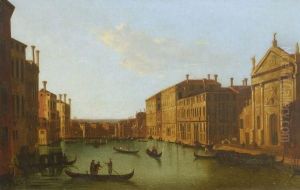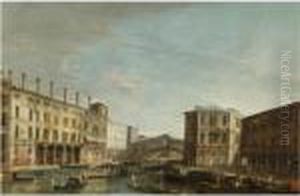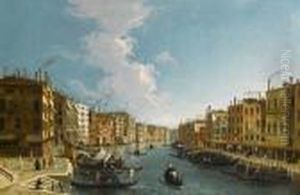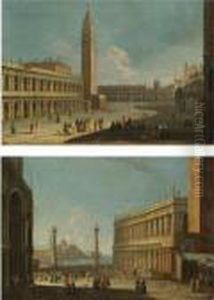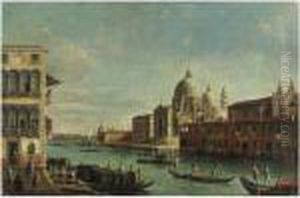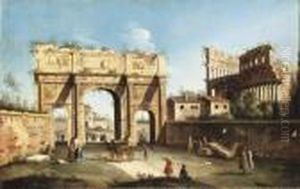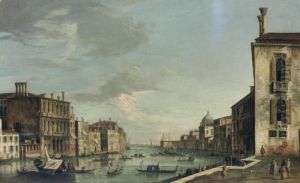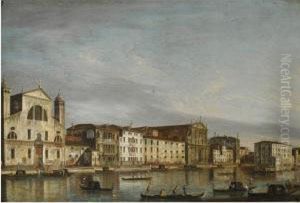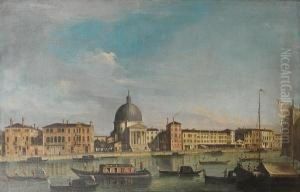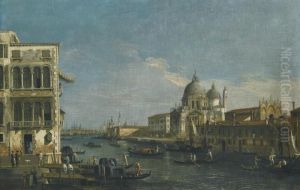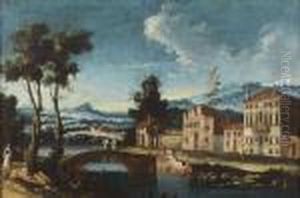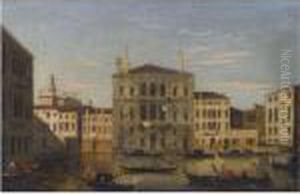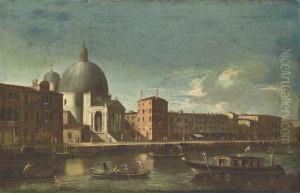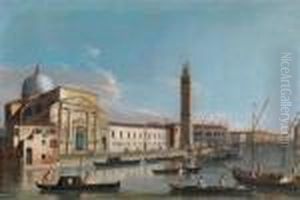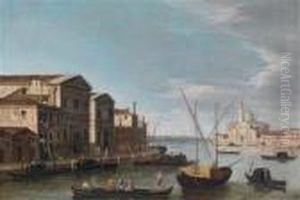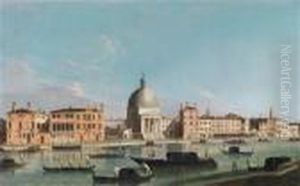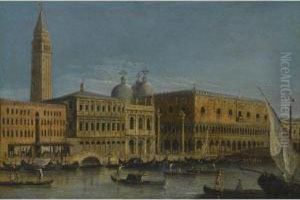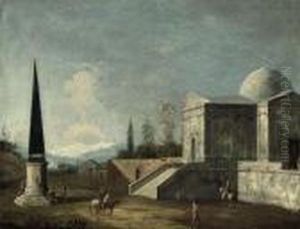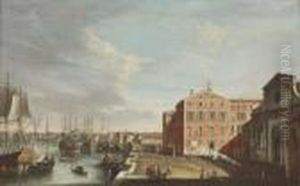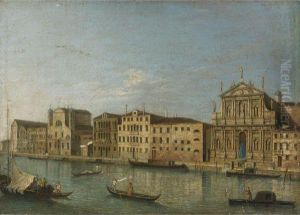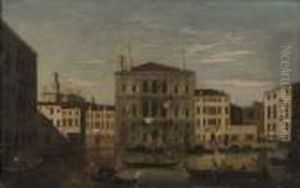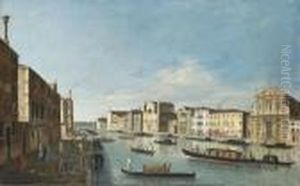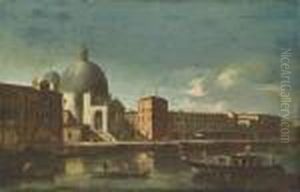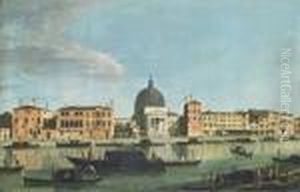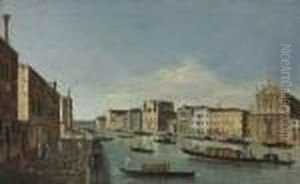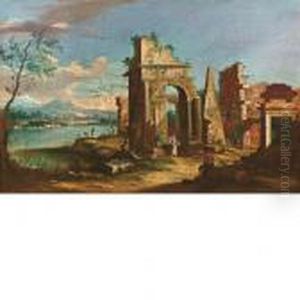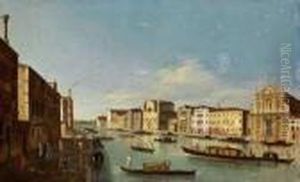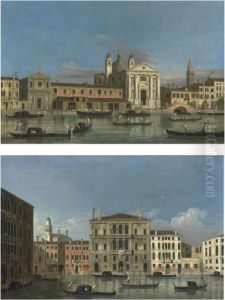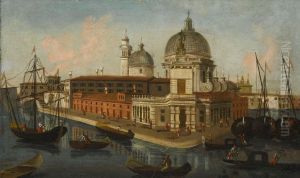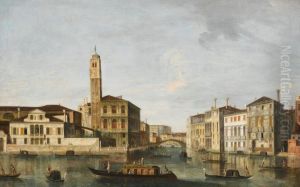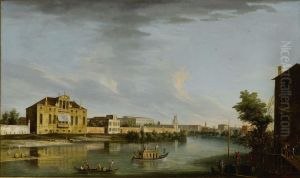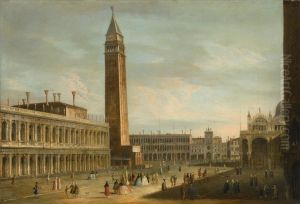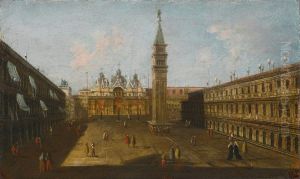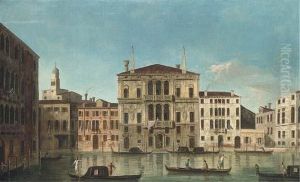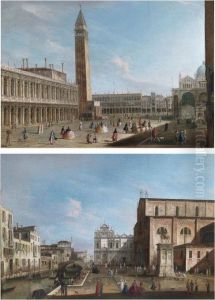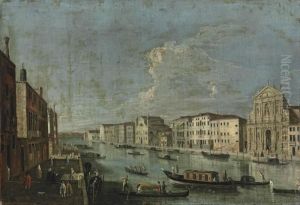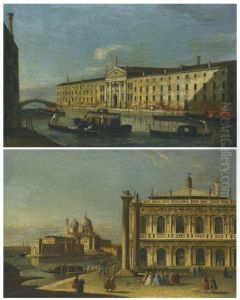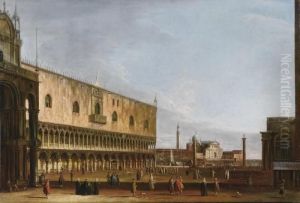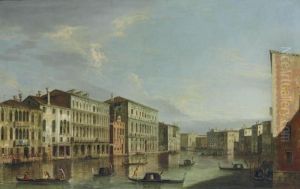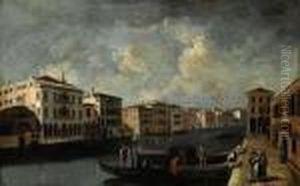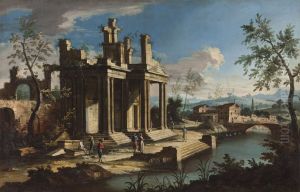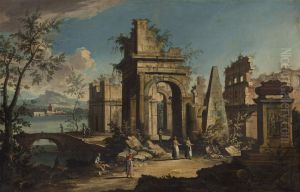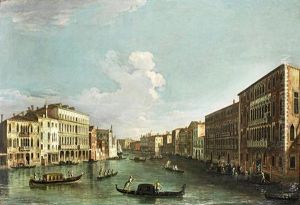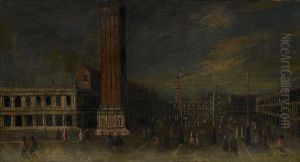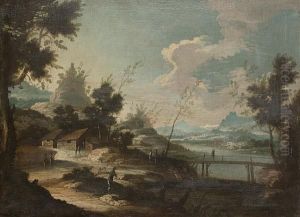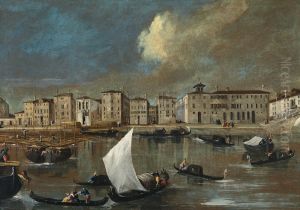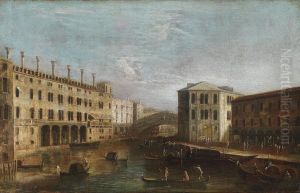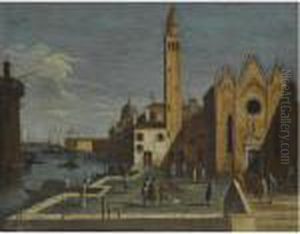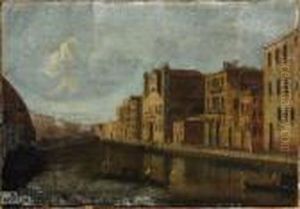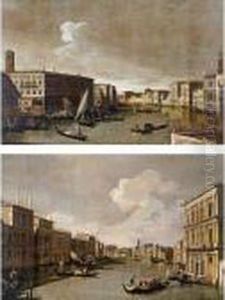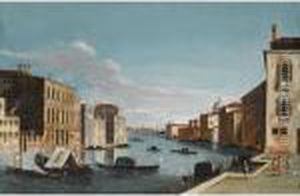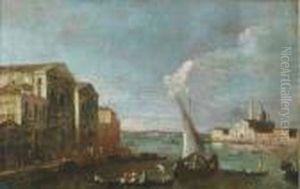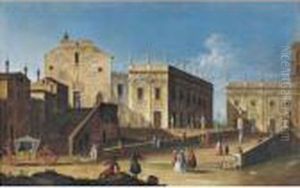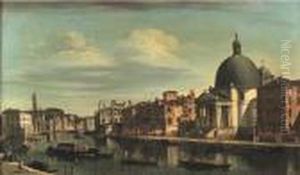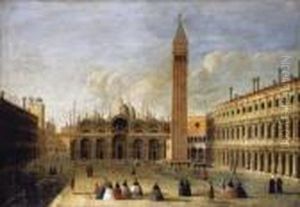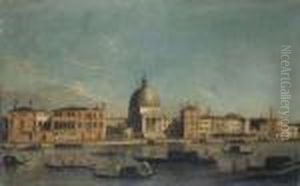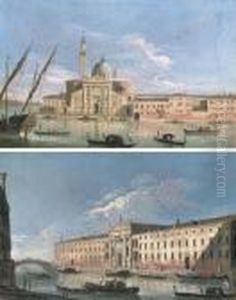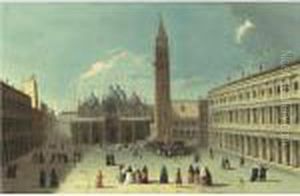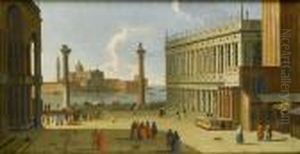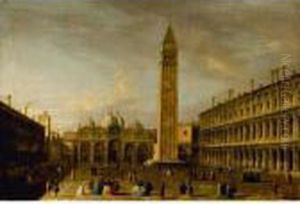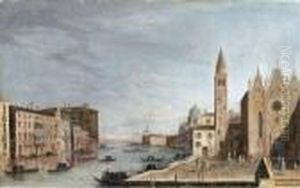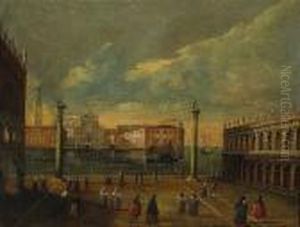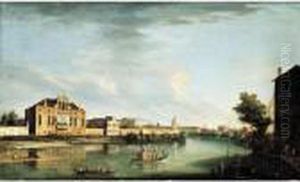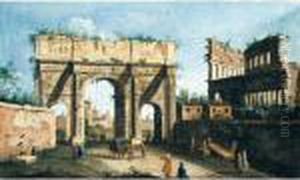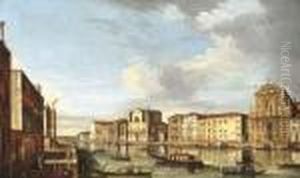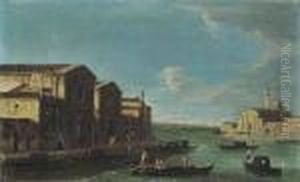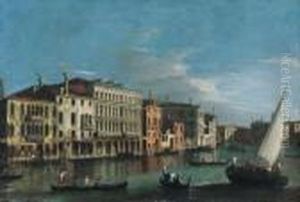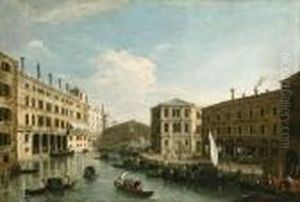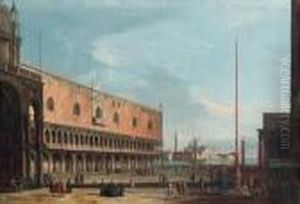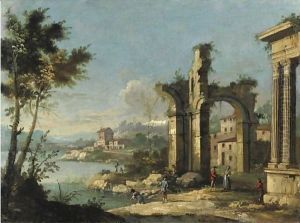Apollonio Domenichini Paintings
Apollonio Domenichini, also known as the Master of the Langmatt Foundation Views, was an Italian vedutista (view painter) active in Venice during the 18th century. Born around 1715, Domenichini's exact birthplace remains uncertain, but his work indicates that he was well integrated into the Venetian artistic milieu. He is particularly known for his detailed and atmospheric depictions of Venetian cityscapes, a genre that was highly popular among Grand Tour travelers seeking souvenirs of their time in Venice.
Domenichini's work is often compared with that of his contemporaries, such as Canaletto and Francesco Guardi. While Canaletto is noted for the precise architectural accuracy in his views, and Guardi for his loose brushwork and capriccio scenes, Domenichini's style is characterized by its vivid color palette and the fluidity of its composition, falling somewhere between the precision of Canaletto and the more impressionistic approach of Guardi.
Not much is known about Domenichini's life and training. However, it is evident from his works that he was deeply influenced by the vedute of Luca Carlevarijs and Michele Marieschi, as well as by the aforementioned Canaletto, who was the dominant figure in Venetian view painting during the first half of the 18th century.
Throughout his career, Domenichini produced a body of work that includes both topographically accurate views of Venice and capricci, which are imaginative compositions of architectural elements in fictional settings. His paintings often feature bustling scenes of Venice's canals, piazzas, and landmarks, replete with figures going about their daily activities, which adds a sense of liveliness and authenticity to his scenes.
Despite the quality of his work, Domenichini did not achieve the same level of fame as some of his contemporaries during his lifetime. It was only in the 20th century that his work began to be studied more thoroughly, leading to a greater appreciation of his contribution to the veduta genre.
Domenichini's date of death is also a matter of some uncertainty, but it is believed that he died around 1770. Today, his works are held in private collections and museums around the world, where they are recognized for their charm and historical value, offering insight into the appearance and atmosphere of 18th-century Venice.
